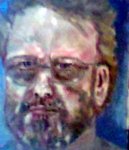Hernan D. Rozenfeld, Diego Rybski, Jose S. Andrade Jr., Michael Batty, H. Eugene Stanley, and Hernan A. Makse are among the leading scholars of urban phenomena today. They just published an important paper entitled "Laws of Population Growth".
The importance of the paper is in the effort of the authors to go beyond stylized facts and to introduce some precision into the measurement of urban phenomena. What we know about cities is very much influenced by the way we mark the boundaries of cities and the way that we collect data about cities. For the most part cities are defined as administrative and governmental units. In reality, cities extend beyond such boundaries. Often a city spans several municipal units.
To overcome the obvious problems of traditional data collection, the authors "introduce a new method to designate metropolitan areas, denoted “City Clustering Algorithm” (CCA). The CCA is based on spatial distributions of the population at a fine geographic scale, defining a city beyond the scope of its administrative boundaries".
By applying this measurement method they find scale-invariant properties which they "modelled using long-range spatial correlations between the population of cells". This leads to the implication that "strong development in an area attracts more development in its neighborhood and much beyond. A key finding is that small places exhibit larger fluctuations than large places. The implications for locating activity in different places are that there is a greater probability of larger growth in small places, but also a greater probability of larger decline".
You can find this paper at: Http://arXiv.org/abs/0808.2202v2


1 comment:
your blog is good,
I like you!
Post a Comment